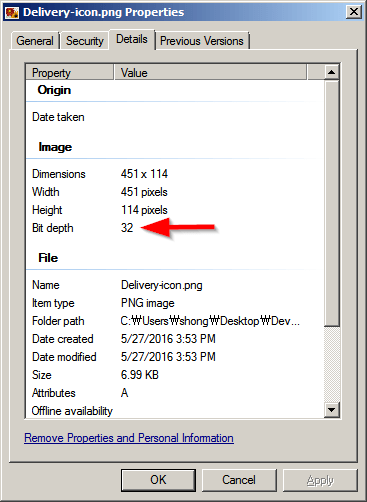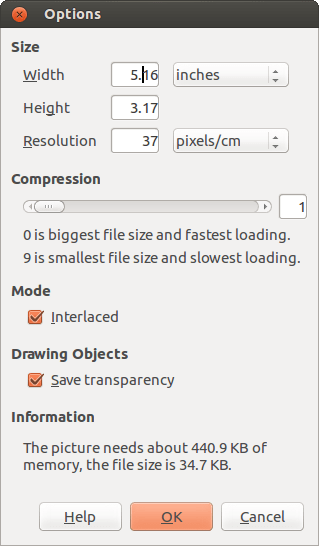Interlaced video is designed to be captured, stored, transmitted, and displayed in the same interlaced format. Because each interlaced video frame is two fields captured at different moments in time, interlaced video frames can exhibit motion artifacts known as interlacing effects, or combing, if recorded objects move fast enough to be in different positions when each individual field is captured.Interlaced Displays low-resolution versions of the image in a browser as the file downloads. Interlacing makes download time seem shorter, but it also increases file size.Progressively rendered GIF files, called interlaced GIFs, use a protocol that is simpler and somewhat more crude than that of PNG or JPEG files, but are almost universally viewable by applications capable of displaying GIF images.Therefore the option to display the png interlaced or not really depends on the (kb) size of the file and how you would like it rendered to viewers with slower connections. When deciding, I compare the file size of png graphics with and without the interlace option and make a decission based on the difference in kb.Conceptually, a PNG image is a rectangular pixel array, with pixels appearing left-to-right within each scanline, and scanlines appearing top-to-bottom. (For progressive display purposes, the data may actually be transmitted in a different order; see Interlaced data order.) The size
Save files in graphics formats in Photoshop
Portable Network Graphics (PNG, officially pronounced / p ɪ ŋ / PING, more commonly pronounced / ˌ p iː ɛ n ˈ dʒ iː / PEE-en-JEE) is a raster-graphics file format that supports lossless data compression.PNG was developed as an improved, non-patented replacement for Graphics Interchange Format (GIF).In this video I will be answering the question, What is the difference between progressive and interlaced video and furthermore, which one is better and more...PNG uses the Adam7 algorithm, which interlaces in both the vertical and horizontal direction. What is interlaced refresh rate? An interlaced display is a cathode-ray tube ( CRT ) display in which the lines are scanned alternately in two interwoven rasterized lines.For example, if your image is being shown in it's full quality - on a dedicated page within a photo gallery - you can safely go with Interlaced. Your image is expected to take a while to load, and file-size doesn't really matter because the end-user expects your full-size image to take a few moments to load.

What is the difference between an interlaced or
Interlacing is a form of incremental decoding, because the image can be loaded incrementally. Another form of incremental decoding is progressive scan. In progressive scan the loaded image is decoded line for line, so instead of becoming incrementally clearer it becomes incrementally larger.For Slick to load png files without a warning, they cannot be interlaced. I don't have photoshop, and I don't want to get it. Is there an alternative way to de-interlace images, perhaps through Paint.net plugins? I'm on a Windows machine, only mentioning this because there is a multitude of de-interlacing programs that only work on Mac or Linux.Lots of image formats support interlacing, including GIF, JPEG, and PNG. Those three all do it differently. A bit of a terminology snafu here: JPEG calls its interlaced images "progressive JPEGs", which is a little bit confusing because in the video world, "progressive" explicitly means "non-interlaced".Noninterlaced is read top down. When your browser reads a noninterlaced image, the image serves as its own progress bar. Interlaced is read in interspersed scan lines. When your browser reads an interlaced image, at first, the image looks like apcray, and then it gets better and better looking until the entire image is downloaded.interlaced. It contains an 8x8 array of indentations representing one unit of interlacing; the full image would contain many of these blocks, tiling the entire picture. Next we add a clear, three-dimensional "PNG" overlay (just because we can) and the first "pixel" in the upper lefthand
What is PNG compression?
An acronym for Portable Network Graphics, PNG is a lossless file structure designed as a more open alternative to Graphics Interchange Format (GIF). Unlike JPEG, which depends upon DCT compression, PNG makes use of LZW compression — the similar as used by GIF and TIFF formats. The result is a smaller report that maintains prime quality.
Dev.Opera — Creating Effective Icons
Free Gold Coin PNG Logo Design Transparent

ON VIDEO FORMATS AND CODING EFFICIENCY
Major Features
Vegas Movie Studio And Interlaced Content - VideoHelp Forum

Graphic File Formats And Terminology

Managing Interlaced Footage | Digital Video | Video

Black Edges In Transparent PNG In Photoshop Save For Web - Graphic Design Stack Exchange

Vegas Movie Studio And Interlaced Content - VideoHelp Forum

Need Help With PAL Deinterlacing - VideoHelp Forum
Color Mode When Exporting A PNG Image - CorelDRAW X6 - CorelDRAW Graphics Suite X6 - CorelDRAW Community

Codec And Wrapper Settings – Cinegy Open

FInd Out If PNG Is 8 Or 24? - Stack Overflow

Exporting High Quality PNG From LibreOffice Draw - Super User

Knowledge Base What Is The Best Practice For Exporting Adobe Premiere® Content For DMP-7000?

What Is The Difference Between These Options When Saving An Image As A PNG In Photoshop For My Game? - Game Development Stack Exchange

Capture Via Magewell Capture Pro HDMI Not Interlaced - VideoHelp Forum
Creating Simple PNG Decoder/Encoder - CodeProject

The Definitive Guide To WordPress Image Management | R Digital Marketing

How Retain Dimensions When Export Odg Object To PNG - Ask LibreOffice

Deinterlacing - Avid Community

0 Comment to "Png - When To Interlace An Image? - Stack Overflow"
Post a Comment